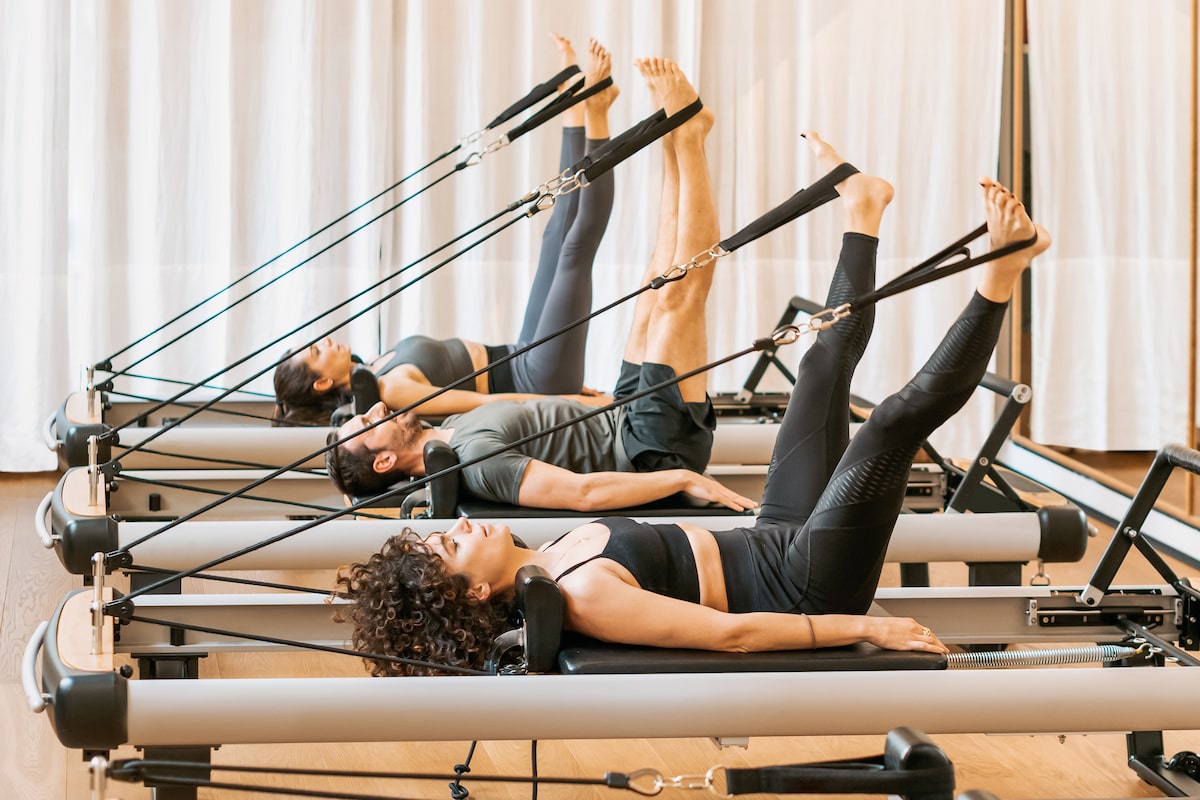Pilates is experiencing renewed popularity thanks to its adaptability to all fitness levels.Photology1971/Getty Images
Once a closely guarded secret in the training regimens of elite dancers, Pilates became mainstream decades ago.
But the workout, embraced for its accessibility, versatility and transformative benefits, is experiencing a moment anew. You can see the recent explosion in the proliferation of high-end studios, or the more than 120,000 videos using the #pilatesprincess hashtag on TikTok, targeting what Vogue Business calls a “key consumer group.” Legendary athletes and icons from LeBron James and Tom Brady to Gisele Bundchen and Maria Sharapova have credited Pilates for boosting core strength, flexibility and the mind-body connection.
Fueling the sport’s renewed popularity is a push for foundational strength-based training in a fitness world saturated by high-intensity workouts that can elevate cortisol, such as HIIT. Growing research reinforces Pilates’ benefits for injury prevention and long-term performance. Don’t worry, though: A big sweat is still inevitable.
Despite their popularity, sleep trackers don’t always lead to a better night’s rest
Why men aren’t getting a warm welcome at the Pilates studio
“People think Pilates is easy – it’s not,” says Morgan Reader, former competitive NCAA lacrosse athlete and trainer at One Academy in Toronto. “It challenges even high-intensity athletes like me to move with purpose, building core strength, flexibility and preventing injury. It’s a powerful reset for both body and mind.”
The Pilates appeal lies in its adaptability. All fitness levels can benefit, and whether you want better posture, a stronger core or a gentler recovery from injury, it offers effective, low-impact results.
While some enthusiasts remain loyal to classical Pilates, many new studios are adopting a hybrid approach, blending traditional movement with strength training and conditioning intervals, whether on a reformer, rower or bike. At Strong Pilates The Beach in Toronto, owner Christina McIsaac uses this approach to help clients pursue a broader range of fitness goals, from building muscle to boosting athletic endurance.
“It’s so humbling because you think you’re strong,” says McIsaac. “I came from CrossFit, where a workout was 250 burpees, and I walk into a Pilates class and can’t perform some of the moves. It will challenge your body in a very different and unconventional way.”
Whether you’re new to Pilates or looking to sharpen your practice, here’s how to get the most out of your session, straight from the experts.
Come early to get comfortable
Starting a new movement practice is easier when you’re not panicked to get there on time.
“Book your first class on a day when you’re not rushing out of the office or from school pickup. Anxiety is the last thing you want to feel when you arrive,” says McIsaac.
You can meet with the instructor before the class starts to mention possible injuries or learn how to modify movements, ensuring a safer and more personalized experience. Plus, this will help ease any of those first-class jitters.
“Studios will know you’re a first-timer based on their booking system, so they’re going to go out of their way to make sure you feel comfortable and supported.”
Growing research reinforces Pilates’ benefits for injury prevention and long-term performance.FreshSplash/Getty Images
Pilates will meet you where you are
Forget the pressure to “go hard or go home.” Instructors often offer variations for every level, making it easy to scale movements up or down, depending on how you feel that day.
“There’s no pressure in the classes. Everyone has their own space and is focused on their journey,” says McIsaac. “You go at your own pace with no benchmark or rep count you’re forced to meet, like is typical in group fitness training. No one pushes you to do something you’re not ready for.”
Pilates is a partner, not a replacement
“Pilates is most effective when integrated with other forms of movement because it enhances your overall physical fitness,” says Reader.
Consider adding heavy strength training, which can help to maintain bone density and muscle mass as we age, as well as aerobic exercise, such as running or a spin class, for heart health.
“If anything, Pilates is made for longevity – you can do this for a lifetime,” concurs McIsaac. “This is training for the life athlete.”
